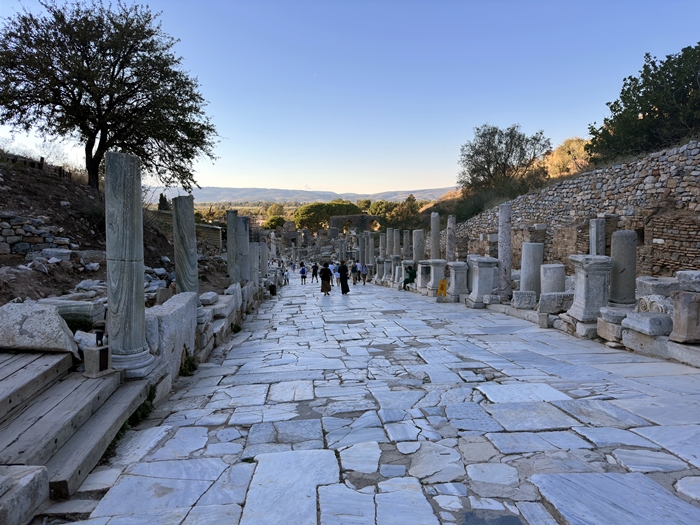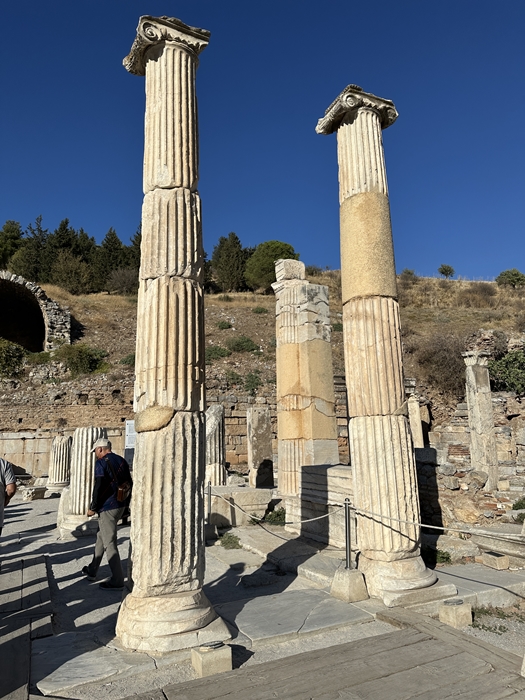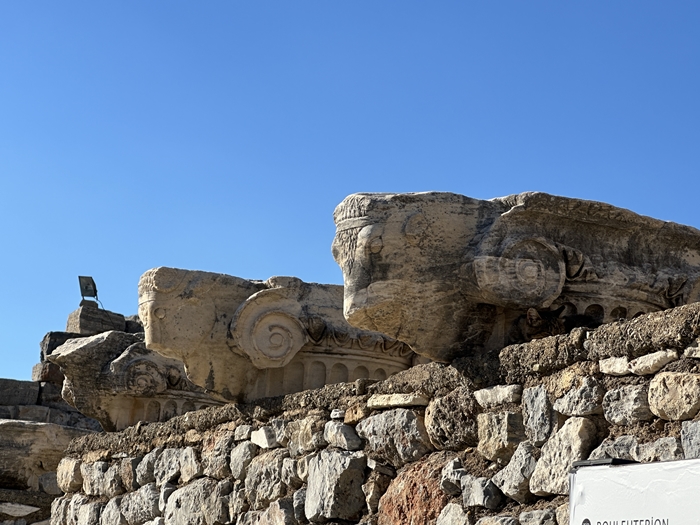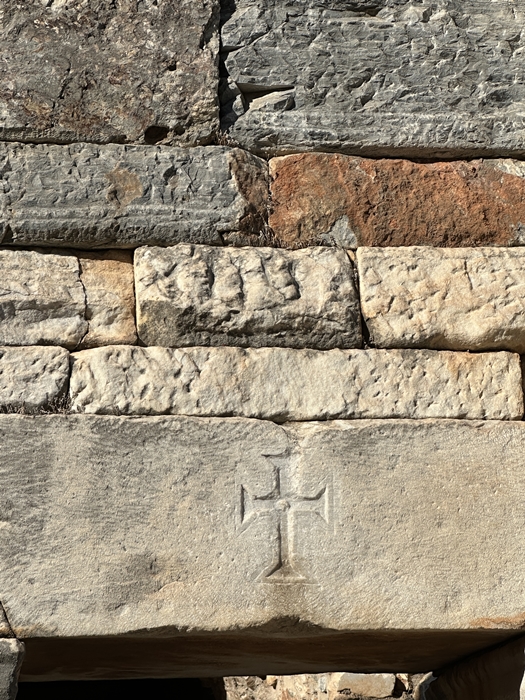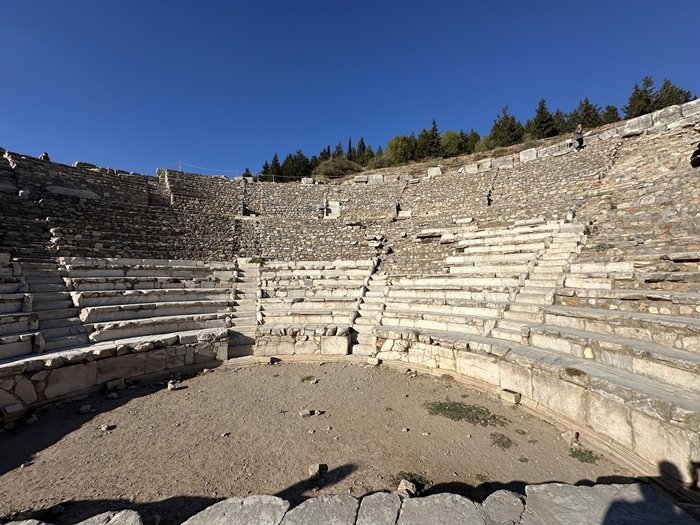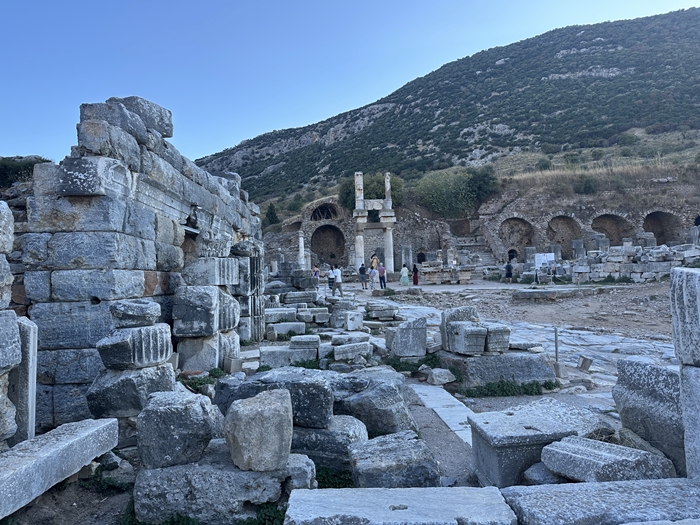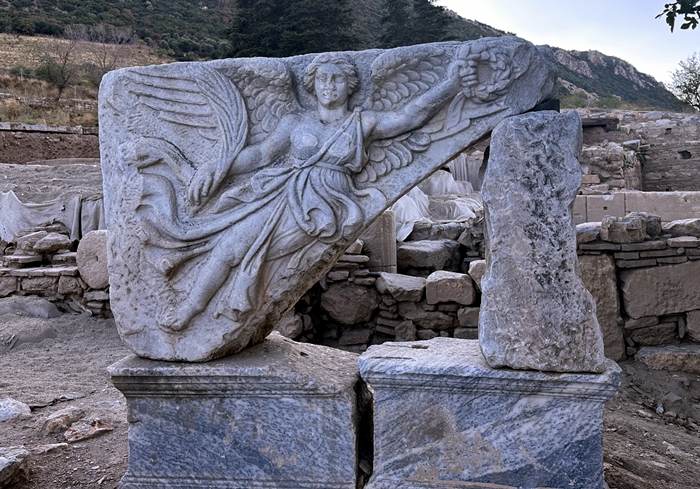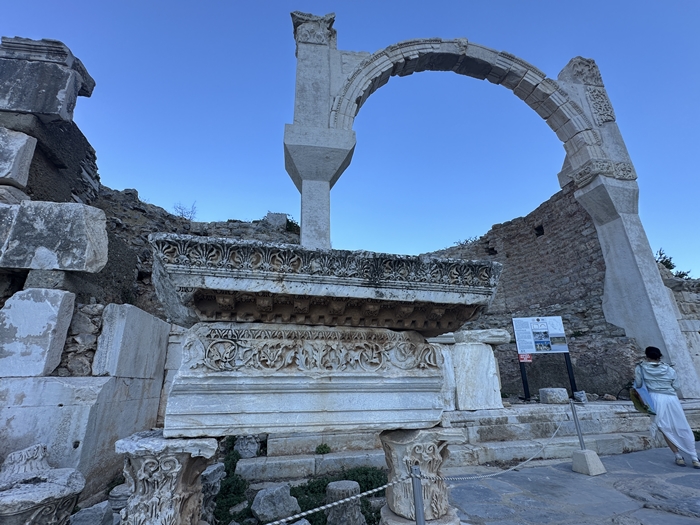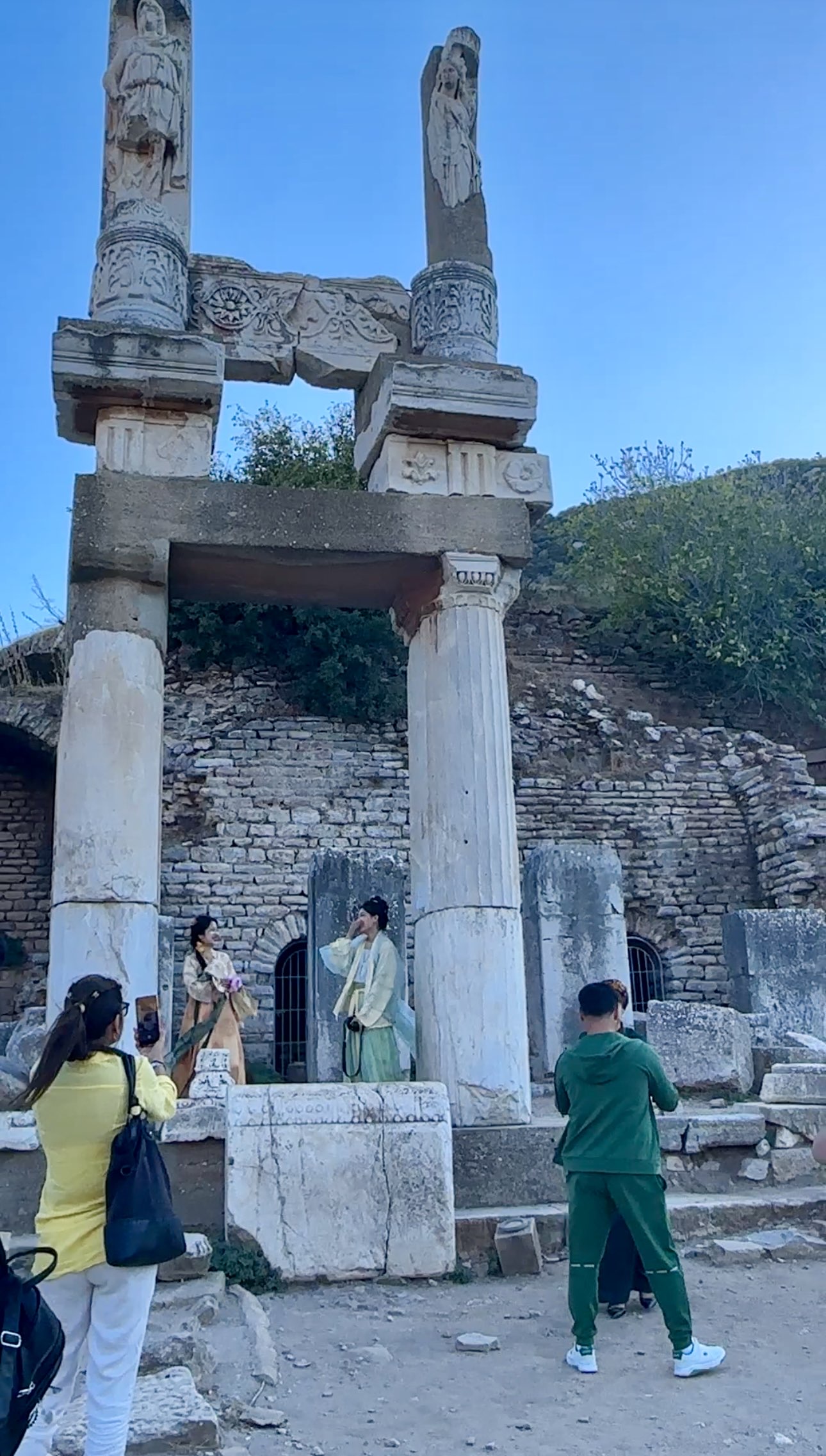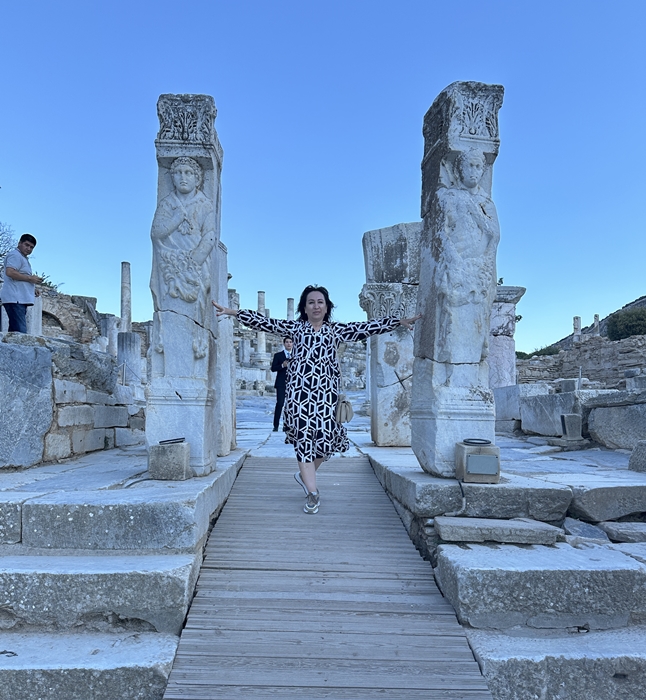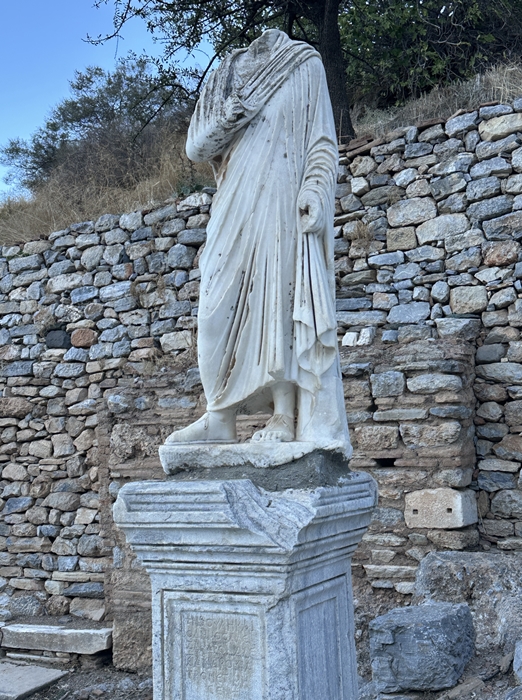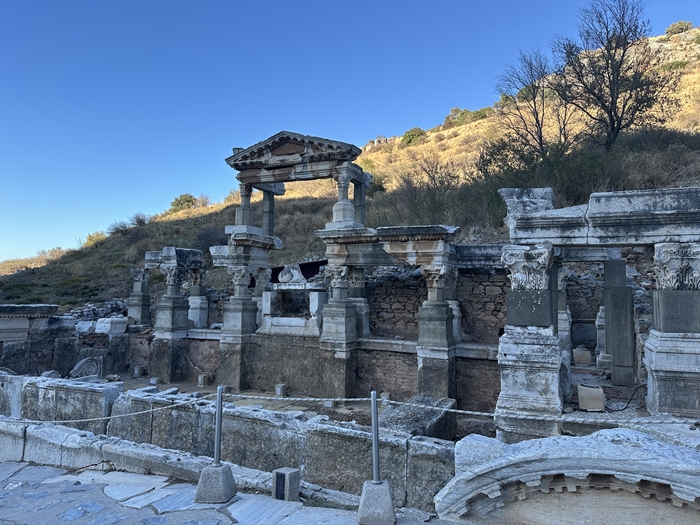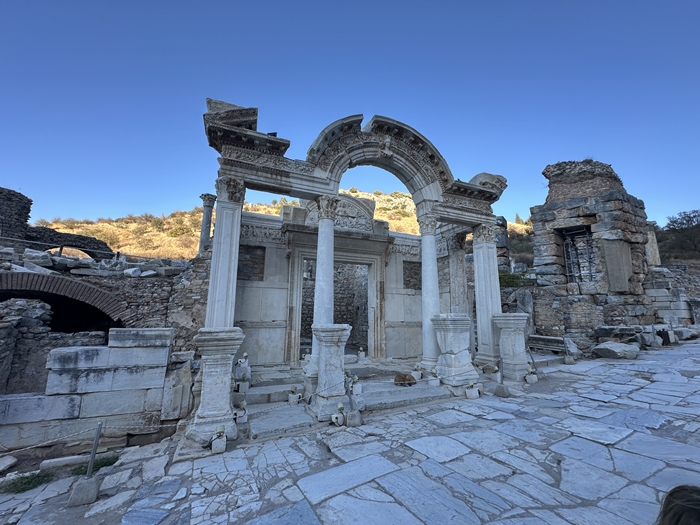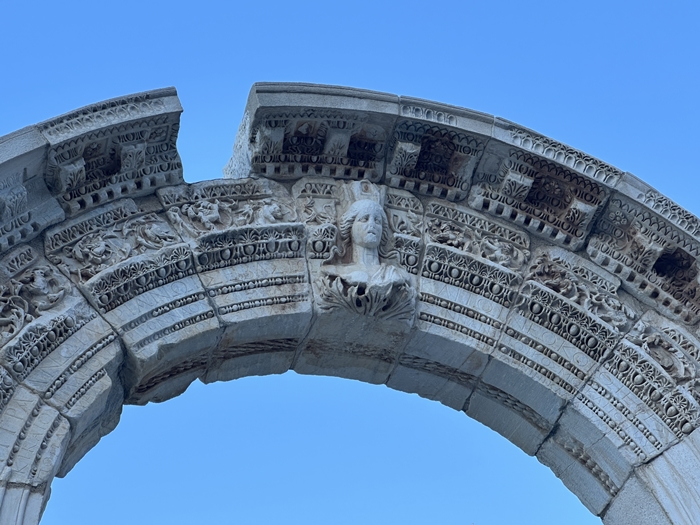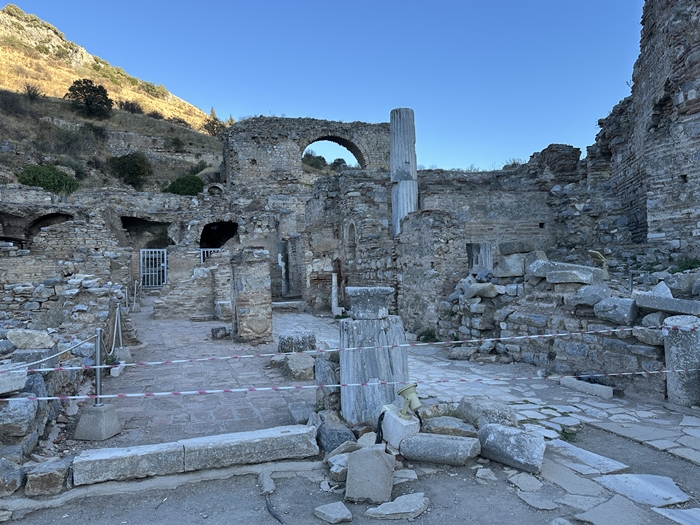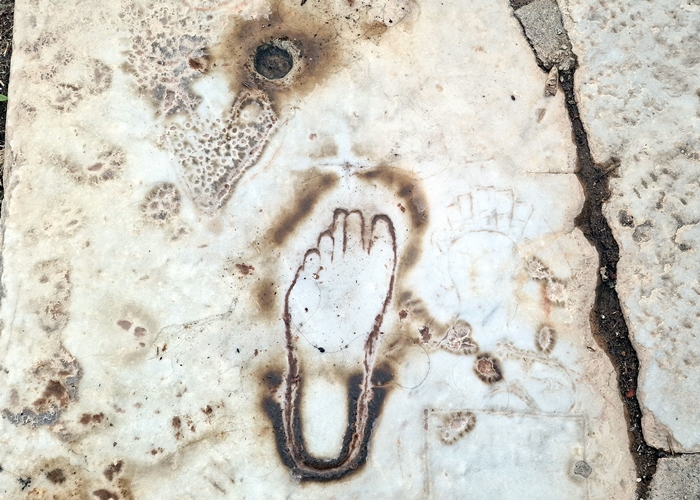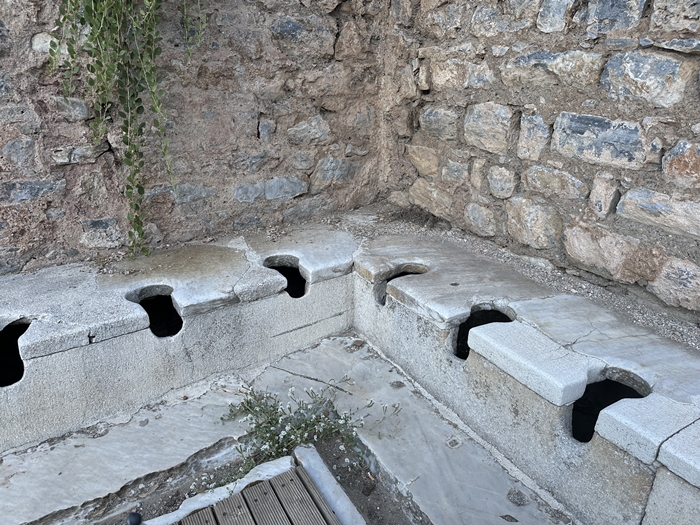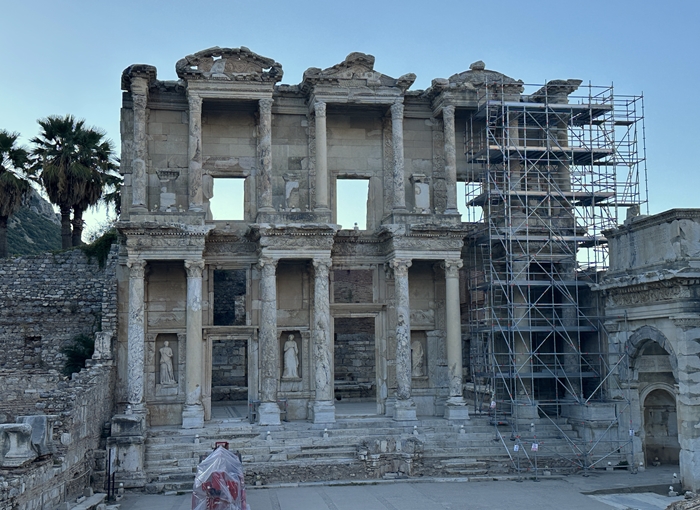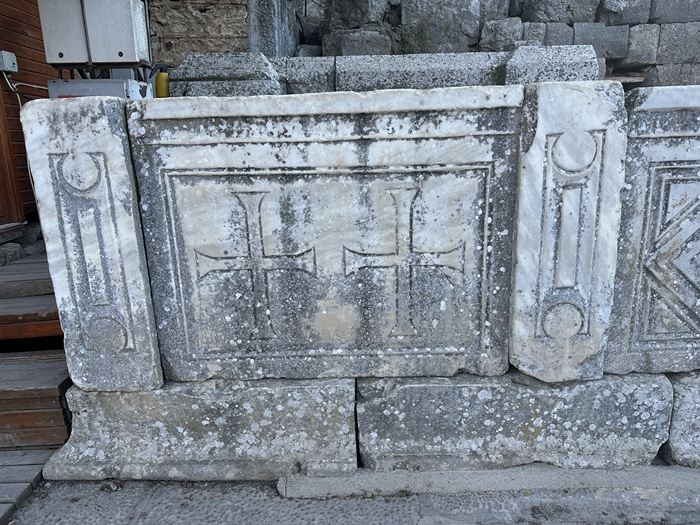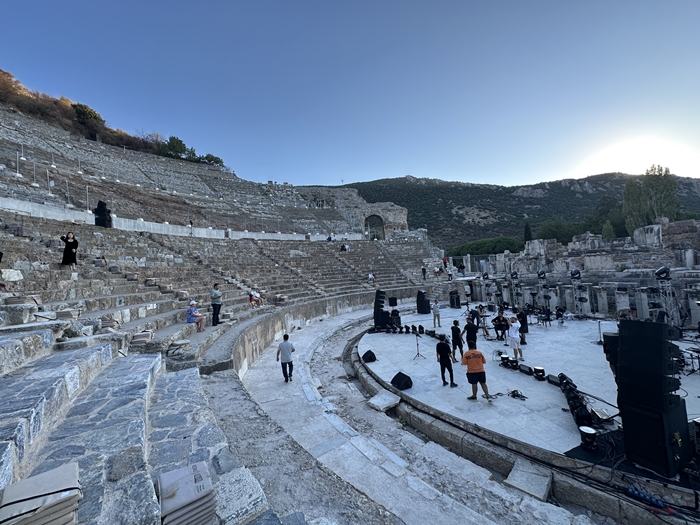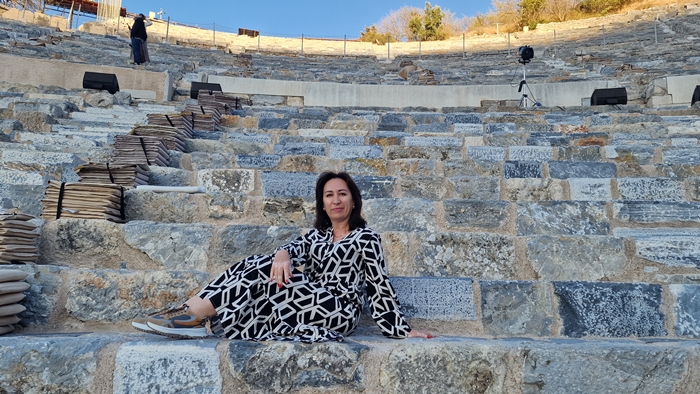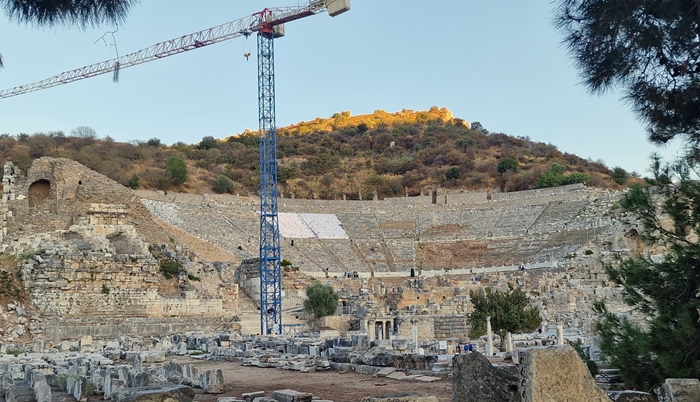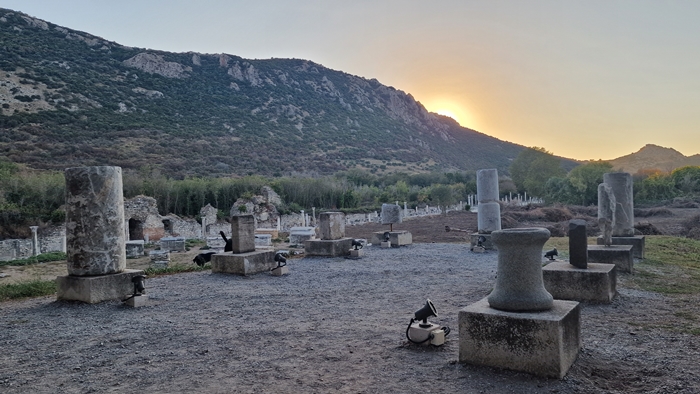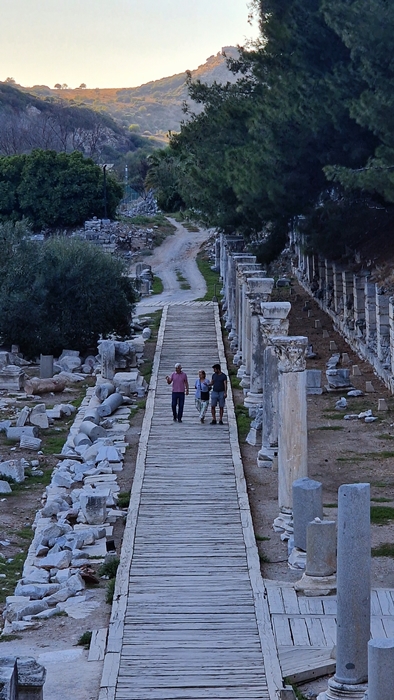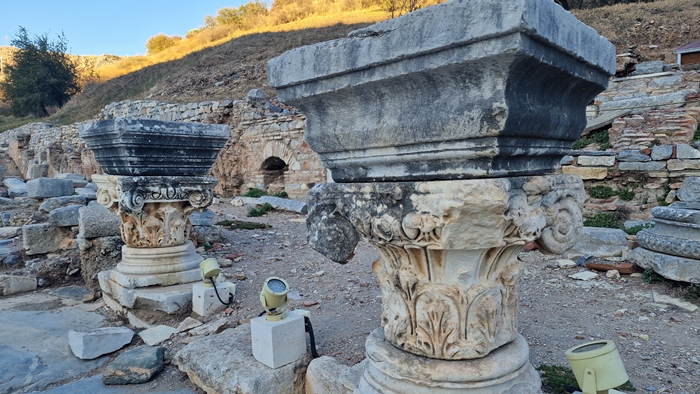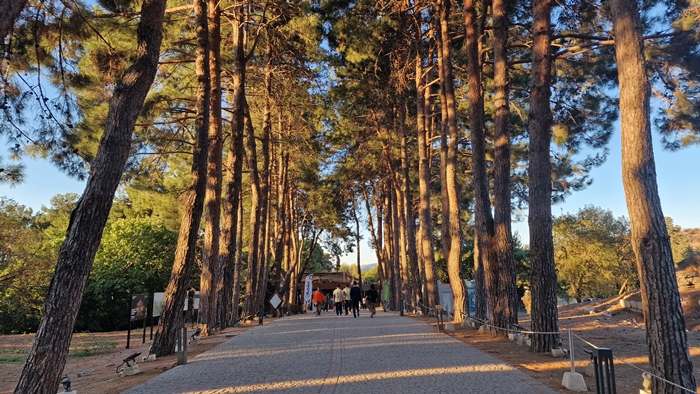Elvira Kadyrova
One of the highlights of our press delegation’s visit to Türkiye was the legendary open-air museum city of Ephesus.
As a UNESCO World Heritage Site since 2015, Ephesus held particular interest for us Turkmen journalists, given our country’s own UNESCO-listed ancient Parthian city of Nisa. Both Ephesus and Nisa were significant parts of Hellenistic culture during a specific period of historical development (late 6th – 1st century BC).
Let’s delve into the origins of Ephesus and its pivotal role in the ancient world.
The ancient city of Ephesus, located on the western coast of the Aegean Sea in Asia Minor (modern Türkiye), was founded in the 10th century BC. Despite being rebuilt several times, the ruins visible to modern tourists date back to the Roman era, the city’s final establishment.
According to legend, Ephesus was founded by Androclos, an Athenian prince who sought divine approval from an oracle. The oracle’s cryptic response, ‘The fish will run away, the boar will run,’ was interpreted as a sign to build the city on a spot where these events occurred.
One day Androclus and his friends caught a fish and began to fry it, but the fish fell to the ground during frying, causing a small fire, while a wild boar hiding nearby escaped. So Androclus decided on the place of construction of his city.
However, another source suggests that the Phoenicians established Ephesus between the 30th and 20th centuries BC, with the city thriving during the Greek colonization of Asia Minor (around 700 BC).
Ephesus’s strategic location made it a prominent port city at the intersection of Aegean Sea trade routes and Asian caravan ways leading to Italy and the Roman West. This advantageous position fostered innovation, scientific advancement, cultural exchange, and artistic expression, solidifying its status as a cradle of civilization.
Renowned for its temple dedicated to the Greek goddess of fertility, Artemis (Roman Diana), Ephesus held a special place in local hearts. According to legend, the Apostle Paul, accompanied by Aquila and Priscilla, visited Ephesus in 52 AD. Through his preaching and healing, Paul converted many Ephesians to Christianity.
Over the centuries, Ephesus has been ruled by various empires, including the Ionians, Aks, Hittites, Lydians, Cimmerians, Medes, and Persians. This multicultural heritage transformed the city into a melting pot of races, religions, and civilizations. Its bustling marketplace, spanning seven hectares, served as a major commercial hub for Greek, Anatolian, and Phoenician merchants.
During the Roman era, Ephesus, under Caesar’s rule in 27 BC, became the capital of the Roman province of Asia. Renowned for its progress, the city was second only to Rome itself, according to UNESCO. Ephesus enjoyed the status of a ‘free city,’ minting its own coins featuring symbols associated with Artemis, such as a torch, bees, and a deer.
The city reached its zenith during the 1st and 2nd centuries AD, witnessing the construction of iconic landmarks like the Celsus Library and a massive theater capable of accommodating up to 25,000 spectators. Ephesus also had numerous large baths and an extensive aqueduct system.
Archaeological excavations in Ephesus have been ongoing for over a century. Experts estimate that it may take another century to fully restore the city’s appearance during the Roman period.
Among the notable sites of Ephesus:
The Prytaneion City Palace, which houses the altar of the goddess Vesta with a sacred fire. Prytaneon served as the political center of Ephesus, where important ceremonies, feasts, and sacrifices were held.
The Odeon, built in the 2nd century A.D, is located on a hillside. It can be said that the Odeon, according to the layout of the room, is a prototype of modern parliamentary halls. The City Senate met in the Odeon, and important political issues were discussed there.
The Agora (market square) was considered the center of trade activity, merchants from all over the Empire flocked there. It was a venue for religious and secular holidays. Goods were delivered to the market from the port, onward they were loaded on ships sailed to the west, and a caravan from the East headed further to Europe.
Library of Celsus – the library was built in 106 in honor of the governor of Ephesus Celsus. His son built the library as a funerary monument, naming the building in his father’s honor.
The Hercules Gate, a prominent feature of Ephesus, consists of two columns adorned with bas-reliefs depicting the Hercules. Located on Kuret Street, these gates once restricted chariot access to the market square, effectively creating a pedestrian zone. Our guide, Ms. Banu, shared a local tradition: as we passed through the gate, we were to spread our arms, touch the pillars, and make a wish. We enthusiastically followed her advice.
With so many fascinating sights and mysterious symbols to explore, a full day might not be enough to fully appreciate the wonders of Ephesus.
Fragment from the life of an ordinary resident of Ephesus
As I wandered through Ephesus, I tried, as far as possible, to imagine the daily life of a typical resident, perhaps a man named Mark.
…So, an ordinary citizen of Ephesus, Mark Lucius, a 50-year-old owner of a textile shop chain, began his day by seeing his son off to the gymnasium. He then attended the Odeon, where the City Council was discussing preparations for the upcoming celebration of the Ephesian fleet’s victory over Aristonicus of Pergamum. Tax increases for local artisans were also on the agenda.
Leaving the Odeon, Mark went, in fact, to his boutiques to check how his negligent employees were coping, calculate profits, evaluate sales. Throughout the day, he conducted several business meetings, negotiating lucrative deals with Chinese silk merchants and Parthian cotton traders.
After a demanding day of work, Mark decided to unwind at the Great Theater, where a thrilling gladiatorial spectacle was scheduled.
“War is father of all, and king of all. He renders some gods, others men; he makes some slaves, others free”, he recalled the words of the Greek philosopher Heraclitus. To soothe his emotions after the gladiatorial fights, Mark planned to spend the evening at the library.
As he approached the House of Wisdom, Virtue, Thought, and Knowledge, Mark noticed a discreet advertisement on the sidewalk, the meaning of which was familiar to him.
The advertisement, a simple depiction of a man’s left foot, a woman’s face, and a heart, clearly invited Mark to visit the Pleasure House, located on the left side of Marble Avenue, directly opposite the library. Mark paused for a moment, lost in thought, before quickly heading towards… Since the story is fictional, it is unknown for certain whether the Goddess of love Venus has won over Mark’s consciousness. I invite you, the reader, to ponder this question and imagine your own conclusion.
***
Ephesus is a truly unique place that allows you to plunge into the atmosphere of ancient civilizations. We advise tourists traveling to the Aegean region of Türkiye to definitely visit Ephesus. ///nCa, 5 October 2024
Odeon
Goddess Nike
Temple of Domitian (Domitian was known as one of the most brutal Roman emperors. During his reign he persecuted many Christians in Roman cities including Ephesus)
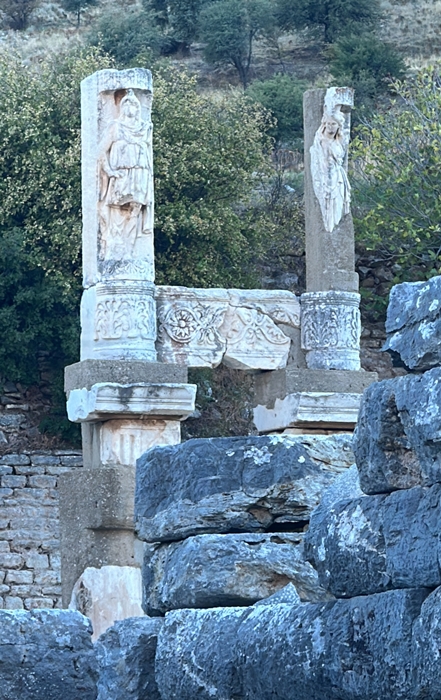 Domitian Temple – Upper Fragment
Domitian Temple – Upper Fragment
Hercules Gate
Temple of Hadrian in Ephesus, Kurets street
Temple of Hadrian, upper fragment
Advertisement on the sidewalk, inviting to the House of Pleasure, Marble Road
Public latrines in Ephesus
Library of Celsus
Great Theater in Ephesus for 25,000 seats
Great Theater in Ephesus for 25,000 seats
